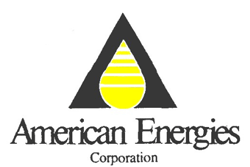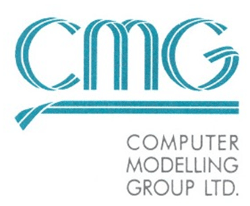 |
|
Kansas Geological Survey Open-file Report 2003-31 |
Conclusions
1. Available oil production history was incomplete (missing) for Wellington West field. Advanced decline curve (Fetkovich’s Type Curve) analyses was used to complete missing production data and to allocate lease production to the well level.
2. Type curve analysis was used to identify if the wells produced under uniform bottom hole pressure. This information is critical for building a reservoir simulation model.
3. Limited water production data indicated that in most wells there was little to no water production initially. Thus, it was assumed that the initial water saturation in the field was at Swcrit - where Krw = 0.
4. Permeability-porosity data used for Wellington were obtained from a neighboring analogous field and are consistent with regional Mississippian trends for dolomite.
K, md = 10(( ![]() *100)0.082-0.127)
where
*100)0.082-0.127)
where ![]() is in fraction.
is in fraction.
5. Capillary pressure curve shapes are similar for a wide range of K but show a relationship of increasing threshold entry pressure and increasing Swi with decreasing permeability.
Pcowentry (psi) = 4.374*K (md) - 0.4625
Swi (%) = -28.8*log10K + 62.6
6. Relative K was modeled using using Corey-type equations. Corey equation exponents, m and n, were initially obtained from measured data and were modified during history matching.
7. Initial Sw distribution could not be mapped in the field due to limited availability of resistivity logs. An interactive relative permeability-capillary pressure table and iterative history matching process were used to estimate the Sw distribution in the field. The IP rate and the characteristic decline curve shape for a well is related to the effective K and the fluid volume within the area of drainage. During the history matching process, the K value in the drainage area was changed. Any change in K resulted in a change in the Swi and Sorw due to the interactive links in the relative permeability-capillary pressure table. Simultaneous changes in K, Swi and Sorw in a drainage area were effective in obtaining reasonable matches with the well production histories, and in the process delineated the volume of OOIP (original oil in place) or the initial distribution of Sw.
8. Reservoir simulation indicated that the average reservoir
pressure,
excluding the aquifer, as of Jan 2003 was 1,800 psi. Fluid column
measurements at 2 wells in Apr 2002 indicated reservoir pressures close
to 1,750 psi. Thus from a material balance standpoint, the described
reservoir was able to match both the production and the limited pressure
history.
9. The results from the simulation study were used to map the residual reserves in the field.
10. Different schemes were simulated to estimate the recovery potential of the remaining reserves.
11. The low prevailing permeability of the reservoir coupled with a very strong bottom water drive makes the option of water injection ineffective.
12. Incremental reserve recovery is likely to be maximized by drilling an infill well between Waugh #2 and Waugh #7.
Acknowledgements
Project Sponsor

Industry Partner

Simulation Software

|
|
Last updated July 2003
http://www.kgs.ku.edu/PRS/publication/2003/ofr2003-31/P3-07.html
